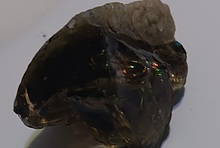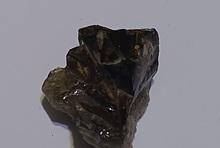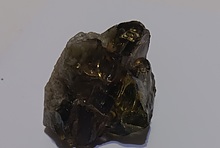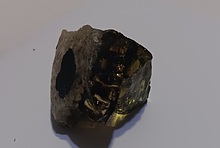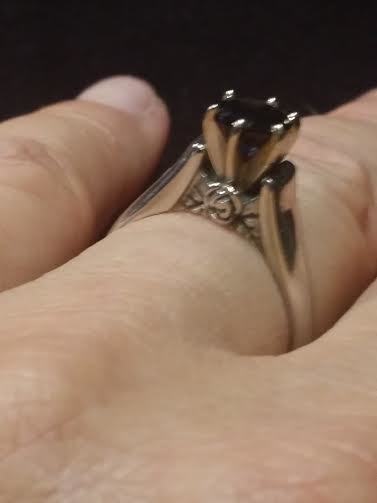Home PageAbout MindatThe Mindat ManualHistory of MindatCopyright StatusWho We AreContact UsAdvertise on Mindat
Donate to MindatCorporate SponsorshipSponsor a PageSponsored PagesMindat AdvertisersAdvertise on Mindat
Learning CenterWhat is a mineral?The most common minerals on earthInformation for EducatorsMindat ArticlesThe ElementsThe Rock H. Currier Digital LibraryGeologic Time
Minerals by PropertiesMinerals by ChemistryAdvanced Locality SearchRandom MineralRandom LocalitySearch by minIDLocalities Near MeSearch ArticlesSearch GlossaryMore Search Options
The Mindat ManualAdd a New PhotoRate PhotosLocality Edit ReportCoordinate Completion ReportAdd Glossary Item
Mining CompaniesStatisticsUsersMineral MuseumsClubs & OrganizationsMineral Shows & EventsThe Mindat DirectoryDevice SettingsThe Mineral Quiz
Photo SearchPhoto GalleriesSearch by ColorNew Photos TodayNew Photos YesterdayMembers' Photo GalleriesPast Photo of the Day GalleryPhotography
╳Discussions
💬 Home🔎 Search📅 LatestGroups
EducationOpen discussion area.Fakes & FraudsOpen discussion area.Field CollectingOpen discussion area.FossilsOpen discussion area.Gems and GemologyOpen discussion area.GeneralOpen discussion area.How to ContributeOpen discussion area.Identity HelpOpen discussion area.Improving Mindat.orgOpen discussion area.LocalitiesOpen discussion area.Lost and Stolen SpecimensOpen discussion area.MarketplaceOpen discussion area.MeteoritesOpen discussion area.Mindat ProductsOpen discussion area.Mineral ExchangesOpen discussion area.Mineral PhotographyOpen discussion area.Mineral ShowsOpen discussion area.Mineralogical ClassificationOpen discussion area.Mineralogy CourseOpen discussion area.MineralsOpen discussion area.Minerals and MuseumsOpen discussion area.PhotosOpen discussion area.Techniques for CollectorsOpen discussion area.The Rock H. Currier Digital LibraryOpen discussion area.UV MineralsOpen discussion area.Recent Images in Discussions
Fakes & FraudsTundra/Tunduru/Tundura Sapphire?

6th Apr 2011 14:30 UTCAnonymous User

6th Apr 2011 15:59 UTCAnonymous User

6th Apr 2011 16:04 UTCAnonymous User

6th Apr 2011 16:12 UTCAnonymous User

6th Apr 2011 16:20 UTCAnonymous User
6th Apr 2011 17:16 UTCStephanie Martin
How large are the beads? Faceted or polished chip style? A picture would be helpful.
If I have time much later this evening I will try and post pictures of Tunduru rough as well as some faceted stones that you could compare.
regards,
stephanie

6th Apr 2011 17:29 UTCAnonymous User
Check out these pics, perhaps you can enlighten me because i really dont know and neither it seems to the sellers
6th Apr 2011 19:07 UTCStephanie Martin
The second pic looks more like pink and green tourmaline or green tourmaline and garnet IMO.
regards,
stephanie
6th Apr 2011 20:23 UTCJan Styer-Gold
Tunduru Sapphires (beads and gemstones) are commonly known to be heat treated with beryllium, especially the golden yellow, orange, and red ones to enhance their color. The color is usually only "skin deep," so they may revert back to their original color with "wear and tear." If you have some beads or gems to spare, I would break some open and see what's on the inside. Beryllium heat treatment of these sapphires is commonly done in Thailand. You might not see the word "beryllium" used in the treatment description by unscrupulous sellers, just the word "heated." Here are some links to discussions regarding the "shenanigans" going on with Tunduru sapphires.
http://gemologyonline.com/Forum/phpBB2/viewtopic.php?t=5018
http://cs.beadandbutton.com/bnbcs/forums/p/6664/31369.aspx
http://www.mindat.org/mesg-55-89859.html
Jan
6th Apr 2011 20:38 UTCStephanie Martin
I am aware of heat treatments etc, but I still don't think those are sapphires, heat treatment or not, in my humble opinion.
regards,
stephanie

6th Apr 2011 20:49 UTCAnonymous User
6th Apr 2011 21:17 UTCJamey Swisher
I also don't believe these are Tunduru sapphires, but most likely Songea. But since most Songea sapphires are Beryllium treated now, many sellers try to pass them off as Tunduru and/or Umba material, because these produce natural vivid colors as well. Tunduru do tend to not be as vivid as Umba material though.
The first stand I can almost guarantee are Beryllium treated. The second probably are, but not as obvious. Also, most beads are Beryllium treated as well as stabilized or clarity enhanced as well. Lots of Beryllium treated glass filled sapphire beads have been flooding the market as well as even some glass filled faceted sapphire gemstones! These would be a dime a dozen! For untreated faceted sapphire beads, you will pay same price per carat almost as faceted gemstones, if cheaper, then there are treatments involved.
But keep in mind, Beryllium treatment is pretty well accepted now that the color is all the way through, completely stable, and do not wear off nor fade.
6th Apr 2011 21:39 UTCJan Styer-Gold
Jamey,
I didn't know that Be Heating had progressed as far as altering the entire stone's color and being stable. Thanks for that info! I've been away from my minerals, gemstones, home, and the internet for a while. Time to do some reading and catching up!
Jan
6th Apr 2011 21:48 UTCStephanie Martin
Thanks Jamey for that explanation as Jan noted.
regards,
stephanie

6th Apr 2011 22:24 UTCAnonymous User
7th Apr 2011 06:14 UTCStephanie Martin
The rough is mainly sapphire, spinel and chrysoberyl with some garnet. The amount shown is 100 cts.
Four jars of faceted Tunduru sapphires and one of Songea (2.5mm), the Songeas are in the front right corner and these have paler shades. Perhaps that is why they make for more vivid treated stones.
Sorry for the indoor lighting.
7th Apr 2011 06:43 UTCJamey Swisher
Yes Be Treatment has been to the core now for quite some time. They are even doing some at much lower temps then they used to, like with the gold/yellow, which makes it very difficult to tell. This is why they have become much more accepted and prices have greatly increased on the material as well. Standard diffusion only penetrates into the surface and if the stone gets chipped or scratched up the color will be lost upon recutting. Be Treated ones can typically even be recut now. :).
Diane,
There are still lots of untreated materials out there, but they carry a premium price tag. The easiest way to know what you are getting is to find a trusted source! Buy from China you will get all kinds of junk from flat out fakes to dyed to synthetics to anything but the real thing, lol. Thailand is not much better anymore, especially with beads! Odds are as well, if you buy cheaply on Ebay you will also end up with something other then what you actually purchased, sadly. :(. This is one area where if something seems to good to be true and too cheaply priced, it is! There is a reason if the material in question is a fraction in price compared to that in a real valid store! Same goes for TV, don;t fall for the BS, "we buy in bulk so we just get it cheaper", load of malarkey, lol. There are only a few things that make a material cheaper:
1. Treatments
2. Poor cutting and lower quality polishes
3. Not as advertised, meaning it is a synthetic, simulant, reconstituted and/or dyed, etc.
4. Did I already mention treatments and poor cutting/polishing? ;)
But do NOT just assume that because a seller is in the USA, or not in an Asian country, that their wares are as advertised! Many USA sellers simply buy from the overseas scammers and resell the garbage at a profit, :/ Investigate your seller, ask questions about credentials... i.e. are they a Gemologist? How many years experience? etc. Ask about possible treatments and see how they respond. Scammers will immediately get on the defensive and flip out typically, lol.
Side note, watch out for the latest scams all over Ebay and such! Girasol... It is NOT blue opal, it is NOT gem silica, it is NOT anything super super rare... What it actually is, is nothing but simple old quartz with a twist. You know the nice star rose quartz you see out there in cabochons? This is the same exact thing, except it does not have the same chromophore(coloring component) and is white. It is nothing more then white star quartz or white quartz with an asterism, your choice. But it is NOT blue opal, NOT Girasol(which is a type of golden flash opal), nor any kind of gem silica, lol.

7th Apr 2011 17:58 UTCAnonymous User

10th Nov 2013 19:33 UTCJulia
11th Nov 2013 02:04 UTCOwen Lewis
If you really want the best deals and to be sure of what you are selling to your customers, you *must* learn to identify and grade for yourself. That means study. some equipment - and experience. It includes being able to spot (most of) the Heinz 57 enhancement treatments that are now used routinely on many stones.it also means knowing and understanding those treatments which are commonplace and undetectable for practical purposes.
You cannot expect a dealer to have checked every piece of the hundreds of kilos of rough they will sell every year. I have a friend who found a taaffeite in a five buck bag of spinels bought from a Sri Lankan dealer. He's been dining out on the story ever since :-)
11th Nov 2013 06:17 UTCRock Currier Expert
Where do you live? What is your work? Go you make jewelry? Out of faceted gems? Cut and polished lapidary materials? Have you the means to travel?

3rd Jun 2015 20:16 UTCBecky Noland

3rd Jun 2015 21:32 UTCBob Harman
5th Jun 2015 18:17 UTCRock Currier Expert

26th Aug 2017 14:41 UTCAntonia369
Thank you in advance for any input.

26th Aug 2017 15:26 UTCBob Harman

26th Aug 2017 15:48 UTCAntonia369
I have had previous transactions with this seller (other stone beads): lapis, moss aquamarine and andalusite, and then subsequently had them checked by my local jeweler who confirmed their authenticity. So I know he doesn't sell plastic. (Bad photo representation I guess....) :-) Since posting here, I actually wrote and already received information from the seller, who said the stones are mixed untreated garnets -- so I'm thinking grossular, hessonite, almandine and so forth. Indeed, he wrote me that he indicated them as "Tundra" as a reference to the color variations found in stones mined in Tunduru, Tanzania.
Being that my original question here was the use of Tundra for garnets, I would have to say that I am satisfied with the seller's explanation.

6th Jun 2018 22:02 UTCJohn Almasi
7th Jun 2018 23:29 UTCA. M.




Mindat.org is an outreach project of the Hudson Institute of Mineralogy, a 501(c)(3) not-for-profit organization.
Copyright © mindat.org and the Hudson Institute of Mineralogy 1993-2024, except where stated. Most political location boundaries are © OpenStreetMap contributors. Mindat.org relies on the contributions of thousands of members and supporters. Founded in 2000 by Jolyon Ralph.
Privacy Policy - Terms & Conditions - Contact Us / DMCA issues - Report a bug/vulnerability Current server date and time: April 19, 2024 11:05:34
Copyright © mindat.org and the Hudson Institute of Mineralogy 1993-2024, except where stated. Most political location boundaries are © OpenStreetMap contributors. Mindat.org relies on the contributions of thousands of members and supporters. Founded in 2000 by Jolyon Ralph.
Privacy Policy - Terms & Conditions - Contact Us / DMCA issues - Report a bug/vulnerability Current server date and time: April 19, 2024 11:05:34



